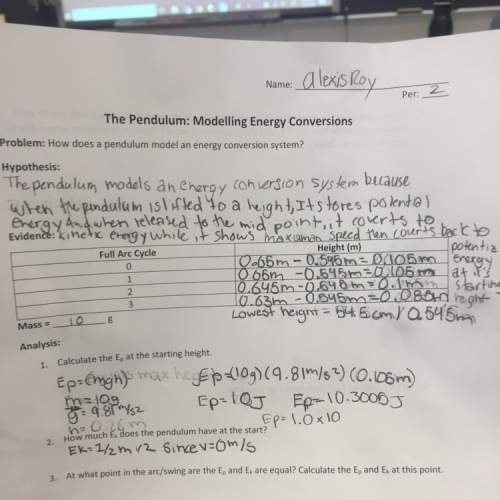
Physics, 15.11.2019 22:31, budjasdatazaki3913
One way for pilots to train for the physical demands of flying at high speeds is with a device called the "human centrifuge." it involves having the pilots travel in circles at high speeds so that they can experience forces greater than their own weight. the diameter of the nasa device is 17.8 m. (a) suppose a pilot starts at rest and accelerates at a constant rate so that he undergoes 30 rev in 2 min. what is his angular acceleration (in rad/s2)? (b) what is his angular velocity (in rad/s) at the end of that time? (c) after the 2-min period, the centrifuge moves at a constant speed. the g-force experienced is the centripetal force keeping the pilot moving along a circular path. what is the g-force experienced by the pilot? ( 1 g = mass × 9 .80 m/s 2 ) (d) the pilot can tolerate 12 g’s in the horizontal direction. how long would it take the centrifuge to reach that state if it starts at the angular speed found in part (c) and accelerates at the rate found in part (a)?

Answers: 3
Other questions on the subject: Physics

Physics, 21.06.2019 22:20, lunamoon1
The place you get your hair cut has two nearly parallel mirrors 6.00 m apart. as you sit in the chair, your head is 2.00 m from the nearer mirror. looking toward this mirror, you first see your face and then, farther away, the back of your head. (the mirrors need to be slightly nonparallel for you to be able to see the back of your head, but you can treat them as parallel in this problem.) how far away does the back of your head appear to be?
Answers: 2


Physics, 22.06.2019 00:20, pooperjooper
Aparticle of mass m is projected with an initial velocity v0 in a direction making an angle α with the horizontal level ground as shown in the figure. the motion of the particle occurs under a uniform gravitational field g pointing downward. (a) write down the lagrangian of the system by using the cartesian coordinates (x, y). (b) is there any cyclic coordinate(s). if so, interpret it (them) physically. (c) find the euler-lagrange equations. find at least one constant of motion. (d) solve the differential equation in part (c) and obtain x and y coordinates of the projectile as a function of time. (e) construct the hamiltonian of the system, h, and write down the hamilton’s equations (canonical equations) of motion.
Answers: 2
Do you know the correct answer?
One way for pilots to train for the physical demands of flying at high speeds is with a device calle...
Questions in other subjects:

Computers and Technology, 30.01.2021 04:00

Mathematics, 30.01.2021 04:00

Advanced Placement (AP), 30.01.2021 04:00



Physics, 30.01.2021 04:00

Mathematics, 30.01.2021 04:00

Advanced Placement (AP), 30.01.2021 04:00

Chemistry, 30.01.2021 04:00

Mathematics, 30.01.2021 04:00



 = Final angular velocity
= Final angular velocity = Initial angular velocity
= Initial angular velocity = Angular acceleration
= Angular acceleration = Angle of rotation
= Angle of rotation











